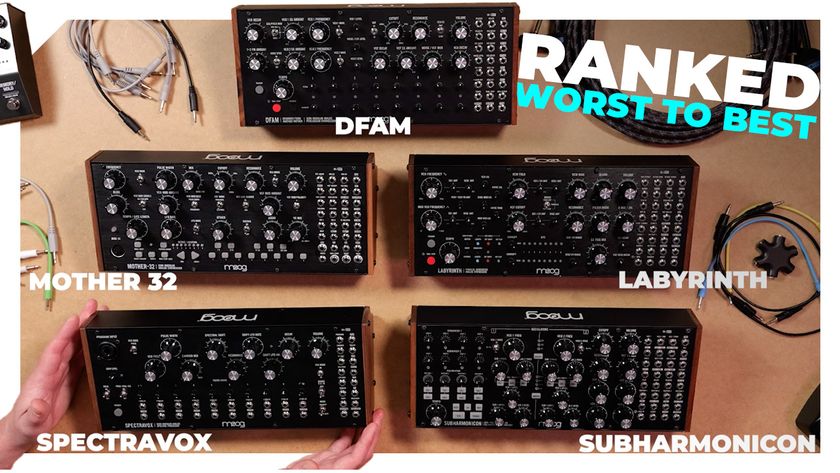The Breakdown: Richard Fearless on how to produce ambient techno
The Death in Vegas mastermind drops some essential production tips in our new video series
Richard Fearless of Death in Vegas invited us into his London-based studio inside a shipping container last month for the latest edition of The Breakdown, the video series where artists break down their creative process so you can get a deeper insight into how they make music.
Richard's latest solo album, Future Rave Memory, is a dark and brooding collection of ambient techno tracks. In today's video, he opens up on how he achieves that truly unique sound.
Beginnings
“The first thing I do is put some kind of clock down. I’d normally start with my 606 or the 909. The benefit of the 909 is I’ve got everything split out individually so I can have more control. For example, I’ll get a hi-hat pattern going and then put a bit of reverb on it from the Lexicon, and then some delay. I like to use two effects at the same time to get a wider sound.
I want it to feel like these machines are alive
“A lot of my tracks I’ll build up in that way, adding layers on top of layers. Once I’ve got it to a certain point then I start taking stuff out until I’m just leaving the bare bones.”
Creating sequences
“A lot of work comes down to building different sequences. For example, I might get a rough rhythm going with the MS-20. I usually use the MS-10 with that, which I love. A lot of people find it horrible to use. The slightest tweak can make it sound wrong; there are basically no locked points [on the pitch controls] so it’s quite hard to get the right notes. But some of my best work, I think, has come from that sequencer.
“The main sequencer that I use is the SAM-16. As a non-musician I tend to write most of my stuff using sequencers, it’s an easier way for me to get notes down. I’ve had the SAM about three years now and I think it’s actually been used on pretty much every track I’ve done since then.”
Synth lines
“The 303 played a huge part on Future Rave Memory. It was essentially my main synth on it. I got it modded by Kenton a few years ago so I can have a bit more control of different aspects. Then I’ll often hook it up to a keyboard so I can control it that way too. I’ll use it to create multiple harmonic layers and have those playing off one another.
Get the MusicRadar Newsletter
Want all the hottest music and gear news, reviews, deals, features and more, direct to your inbox? Sign up here.
Once I had the stems, I’d put them through the console and re-run them through my effects to do live dub mixes – that kind of Conny Plank technique
“I have one of the few MIDI Minimoogs, they’re known as the Welsh Moogs [produced by Cardiff-based company Moog Music Limited, which acquired the name in the ’90s]. I use the Moog a lot for tonal pads, and stuff like that.”
Creating arrangements
“What I’ll tend to do is build up different melodies and sequences. Then when I’m happy with each part, I put each down individually. I’ll do a long seven minute or so pass. That’s why I never have an arrangement in mind before recording, but I’ll create an arrangement with my passes, if that makes sense. I don’t like to do too much editing. I’ll build up a structure with each recording pass, letting each new one build off the last one.”
Modulation and movement
“One of the things that is very important to me is how lines work off each other. A lot of that comes down to using things like the [Deltalab] Effectron so much, and not having delays that are exactly locked in and done more by ear.
“When I talk about processing my stems once I’ve recorded them, what I’ll do, for example, is send them through things like the Hiwatt Tube Tremolo pedal. When those modulation sounds aren’t locked in, it starts to feel a lot more organic and that’s what I want. I want to make it feel like these machines are alive and working off one another.”
Mixing Future Rave Memory
“Mixing the album took a while. I was doing things differently to how I used to. With the studio running live, I would record a pass, put it down, layer them up with the effects chains. Once I had those stems, I’d put them through the console and re-run them through my effects to do live dub mixes – that kind of Conny Plank technique. Sometimes I’d end up going back to each track three or four times until I couldn’t take it any further.”


Future Music is the number one magazine for today's producers. Packed with technique and technology we'll help you make great new music. All-access artist interviews, in-depth gear reviews, essential production tutorials and much more. Every marvellous monthly edition features reliable reviews of the latest and greatest hardware and software technology and techniques, unparalleled advice, in-depth interviews, sensational free samples and so much more to improve the experience and outcome of your music-making.











